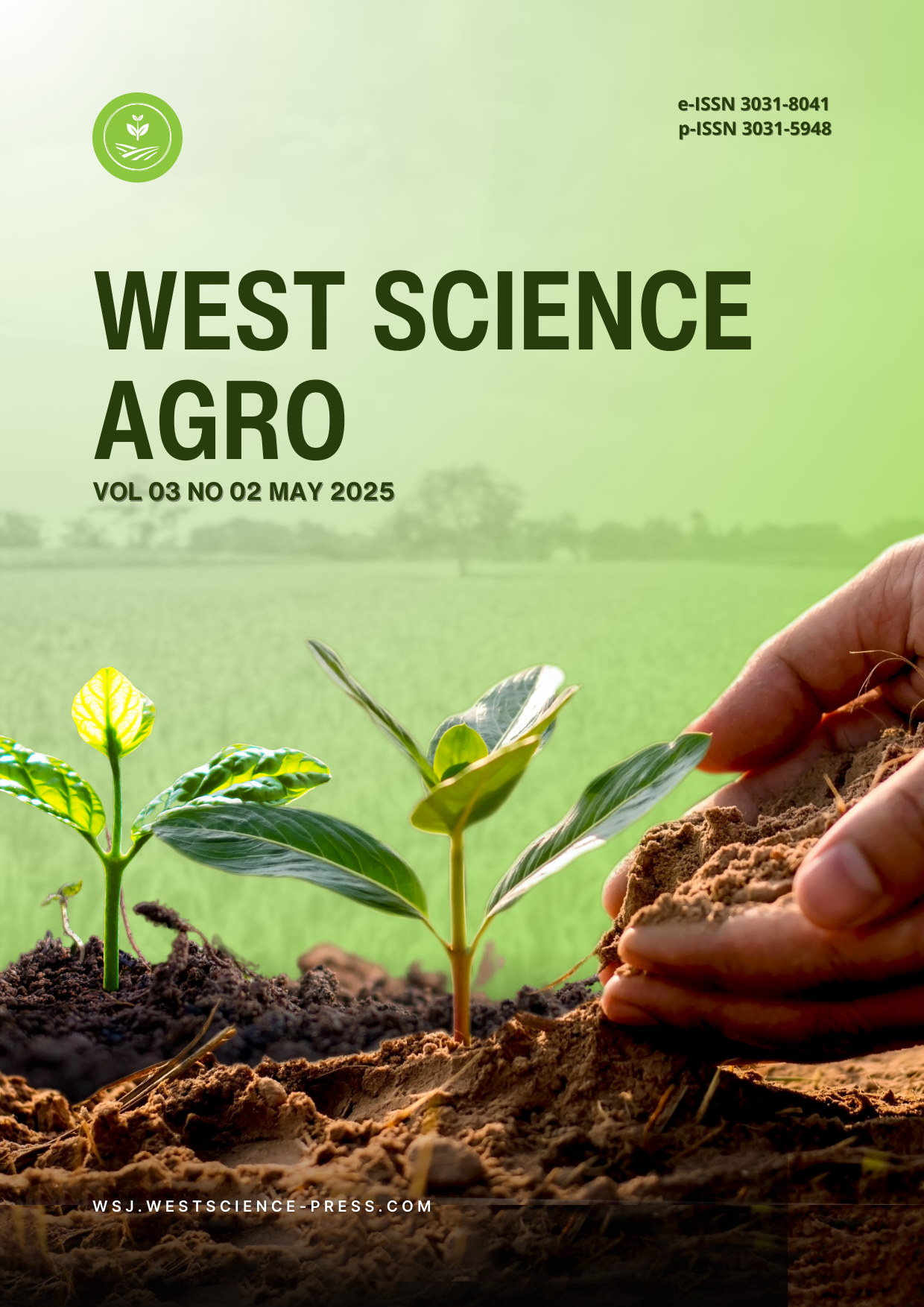The Role of Modern Harvesting Tools in Supporting Agricultural Modernization and National Food Security
DOI:
https://doi.org/10.58812/wsa.v3i02.1925Keywords:
Modern harvesting tools, agricultural modernization, food security, farmer adoption, IndonesiaAbstract
Modern harvesting tools have become essential in supporting agricultural modernization and strengthening food security in Indonesia. This study uses a qualitative approach, interviewing five farmers to explore their experiences with adopting and utilizing these tools. The findings reveal that modern harvesting tools significantly reduce labor requirements, save time, and improve crop quality, directly benefiting farmers' productivity. However, the adoption process is hindered by financial constraints, limited technical knowledge, and maintenance challenges. The study highlights the need for government support in providing subsidies, affordable credit, and local technical training to ensure the sustainable use of modern tools. These findings underscore the transformative potential of modern agricultural technologies in achieving national food security goals.
References
[1] P. Ordóñez de Pablos, M. N. Almunawar, and M. Anshari, Strengthening Sustainable Digitalization of Asian Economy and Society. IGI Global, 2024.
[2] A. Ma’ruf, C. Zulia, S. Safruddin, and D. W. Purba, “Indonesian agricultural sector performance 2013-2017.,” 2019.
[3] L. Setiartiti, “Critical point of view: The challenges of agricultural sector on governance and food security in Indonesia,” in E3S Web of Conferences, EDP Sciences, 2021, p. 1034.
[4] 吴崇伯, “印尼农业发展成就, 政府扶助农业的主要政策措施及存在的问题,” 南洋问题研究, vol. 1, 2009.
[5] M. Yusun, H. Fariadi, and E. Andriani, “Komparasi Biaya Panen Padi Sawah Antara Petani Mengadopsi dan Tidak Mengadopsi Teknologi Harvester Combine Machine di Desa Padang Siring Kecamatan Seginim Kabupaten Bengkulu Selatan,” Mikroba J. Ilmu Tanaman, Sains Dan Teknol. Pertan., vol. 1, no. 3, pp. 29–39, 2024.
[6] B. von Dietrich and M. Hacker, “UMWELT-WASSER”.
[7] L. Herrmann, J. Brust, and J. Hertzberg, “Automated byproduct segmentation in grain images,” in Fourteenth International Conference on Machine Vision (ICMV 2021), SPIE, 2022, pp. 38–45.
[8] S. T. Ten, K. A. Shafie, R. A. Rani, and M. H. Hashim, “Agriculture Modernization and Enhancement Using Advanced Technologies,” Adv. Agric. Food Res. J., vol. 4, no. 1, 2023.
[9] S. Misra and A. Ghosh, “Agriculture paradigm shift: a journey from traditional to modern agriculture,” in Biodiversity and Bioeconomy, Elsevier, 2024, pp. 113–141.
[10] H. Takeshima et al., “Sustainable agricultural modernization productivity tools in Asia,” 2024.
[11] G. Rusmayadi, D. R. Mulyanti, and A. Z. A. Alaydrus, “Revolutionizing agrotechnology: Meeting global food demand through sustainable and precision farming innovations,” West Sci. Interdiscip. Stud., vol. 1, no. 08, pp. 619–628, 2023.
[12] L. Gao et al., “Main grain crop postharvest losses and its reducing potential in China,” Trans. Chinese Soc. Agric. Eng., vol. 32, no. 23, pp. 1–11, 2016.
[13] L. Wang, C. Qin, Y. Li, J. Chen, and L. Xu, “An improved particle filtering to locate the crop boundary of an unharvested region using vision,” Ind. Robot Int. J. Robot. Res. Appl., vol. 48, no. 2, pp. 211–220, 2021.
[14] S. Nandi, “EVALUATING THE EFFECTIVENESS OF SECURITY TESTING TOOLS IN AUTOMATED TESTING,” 2024.
[15] T. Chen et al., “Studies and prospectives of mechanically harvested ratooning rice in China,” Technol. Agron., vol. 4, no. 1, 2024.
[16] F. Mo et al., “Development and application of micro-fieldrain-harvesting technologies,” Trans. Chinese Soc. Agric. Eng., vol. 29, no. 8, pp. 1–17, 2013.
[17] B. Yu et al., “A bio-inspired microwave wireless system for constituting passive and maintenance-free IoT networks,” Natl. Sci. Rev., vol. 12, no. 2, p. nwae435, 2025.
[18] J. W. Creswell, “Research Desain: Pendekatan Kualitatif, Kualitatif, Dan Mixed (Edisi Keti).” Yogyakarta, 2013.
[19] M. Q. Patton, “Two decades of developments in qualitative inquiry: A personal, experiential perspective,” Qual. Soc. Work, vol. 1, no. 3, pp. 261–283, 2002.
[20] R. Aldillah, “Kinerja pemanfaatan mekanisasi pertanian dan implikasinya dalam upaya percepatan produksi pangan di Indonesia,” in Forum Penelitian Agro Ekonomi, 2016, pp. 163–171.
[21] K. Kusnanto, M. L. Sumarni, and U. Usman, “Cutting-Edge Agricultural Technology for Farmer Self-Reliance: Support and Implementation of Efficient Spraying Equipment,” REKA ELKOMIKA J. Pengabdi. Kpd. Masy., vol. 5, no. 3, pp. 272–279, 2024.
[22] A. St Fatmawaty and A. A. Bijaksana, “Implementasi Alat dan Mesin Pertanian dalam Mendukung Kedaulatan Pangan Indonesia,” Jnsta Adpertisi J., vol. 3, no. 1, pp. 30–33, 2023.
Downloads
Published
Issue
Section
License
Copyright (c) 2025 Loso Judijanto, Dewa Oka Suparwata, M Marjan, Liz Yanti Andriyani

This work is licensed under a Creative Commons Attribution-ShareAlike 4.0 International License.






















 Instagram
Instagram 